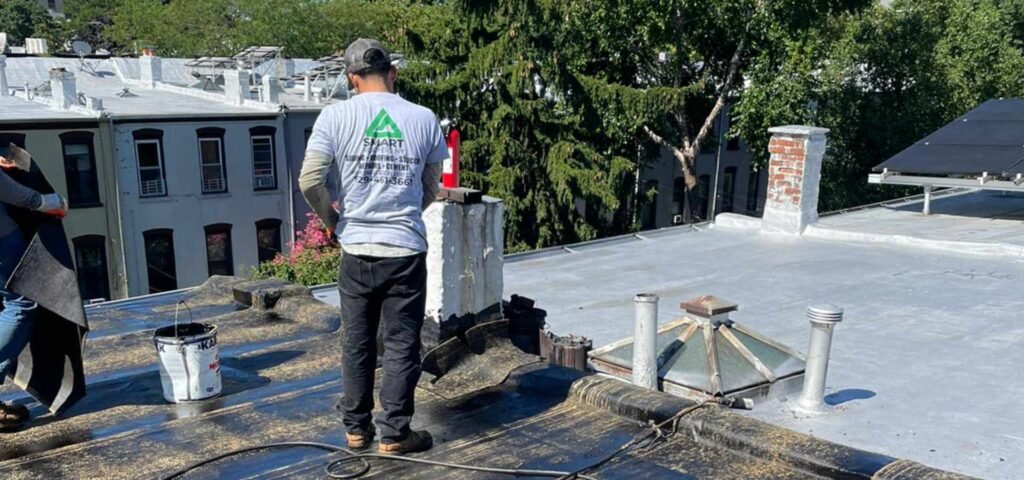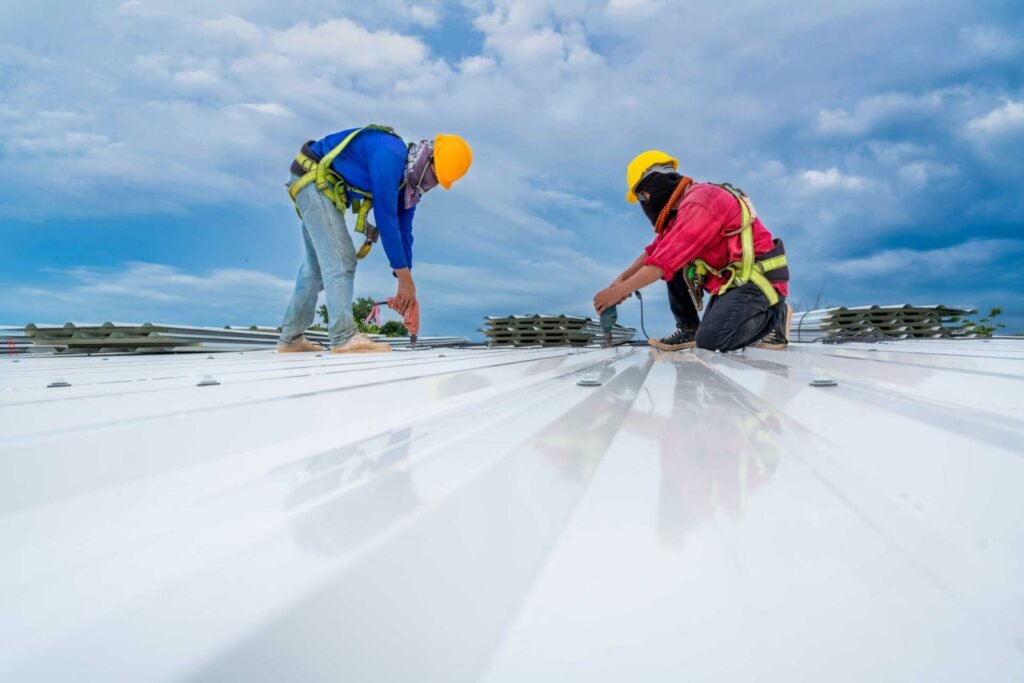Flat roofs are a common choice for many commercial and residential buildings due to their practicality and modern aesthetics. However, they require timely replacement under certain circumstances. Recognizing the signs that your flat roof may need attention is essential in maintaining the integrity of your property. Common indicators of wear and tear include pooling water, cracked or blistered surfaces, sagging areas, and visible leaks. Any of these symptoms can suggest underlying issues that necessitate a flat roof replacement to avoid further damage.
Moreover, the roofing material plays a vital role in the longevity and performance of flat roofs. Common materials used in flat roofing systems include EPDM (Ethylene Propylene Diene Monomer), TPO (Thermoplastic Polyolefin), and built-up roofing. Each material has its unique properties and lifespan, influencing the overall effectiveness and durability of the roofing system. For instance, EPDM is known for its excellent weather resistance and longevity, while TPO is favored for its energy efficiency and seamless installation capabilities. Understanding these materials can aid homeowners in making informed decisions during the replacement process.
Several factors demand attention while determining whether a flat roof replacement is necessary. The age of the roof can significantly influence its condition; roofs over 20 years old are often prime candidates for replacement. Additionally, local weather conditions, such as frequent heavy rains or severe heat, can accelerate wear. A property’s maintenance history is also critical; poorly maintained roofs are more prone to damage. Lastly, budgeting for flat roof replacement is essential. Evaluating the long-term costs associated with repairs versus full replacement can guide homeowners in making the best decision for their property. A proactive approach in understanding these factors can ultimately save time, money, and stress.
Choosing the Right Materials for Your Flat Roof Replacement
When embarking on a flat roof replacement, the choice of materials is crucial for ensuring longevity, energy efficiency, and overall performance. Several popular options are available, each with its own distinct advantages and disadvantages. Understanding these can help homeowners make an informed decision tailored to their specific needs.
One of the most commonly used materials is Ethylene Propylene Diene Monomer (EPDM) rubber. Known for its durability and excellent weather resistance, EPDM is a single-ply membrane that can last up to 50 years. It is also relatively easy to install and maintain, making it a favored choice among contractors. However, it can absorb heat, potentially increasing energy costs.
Thermoplastic Olefin (TPO) is another preferred option due to its energy-efficient properties. This single-ply roofing system reflects sunlight, reducing cooling costs. TPO roofs are flexible and lightweight, offering ease of installation. However, they might not be as durable as EPDM when exposed to extreme weather conditions.
Polyvinyl Chloride (PVC) roofing is similar to TPO but differs in its chemical composition. PVC is particularly resistant to environmental stress and has a long lifespan of approximately 20 to 30 years. While it tends to be more expensive, its durability in extreme conditions often justifies the investment.
Modified bitumen is a hybrid system that combines asphalt and rubber, providing excellent waterproofing. It is generally applied using a torch-down method, which can be labor-intensive. Nevertheless, this material is highly durable and suited for areas with extreme weather fluctuations, making it an effective choice for various climates.
Lastly, built-up roofing (BUR) consists of layers of asphalt and felt, creating a thick, robust surface. This traditional roofing method offers excellent waterproofing and insulation but can be quite heavy and labor-intensive to install.
In light of environmental considerations, choosing materials that include recycled content can contribute to sustainability efforts. Furthermore, local climate can significantly impact the longevity and performance of the selected material. For instance, regions prone to extreme heat may benefit from reflective roofing solutions, while areas that experience heavy rainfall may require more robust waterproofing systems.
The Flat Roof Replacement Process: Step-by-Step Guide
The process of flat roof replacement involves several key stages that ensure a successful outcome. First and foremost, homeowners must hire a qualified roofing contractor who has expertise in flat roof systems. This step is crucial, as improper installation can lead to significant problems in the future. The contractor will advise on obtaining the necessary permits, which vary by location, ensuring compliance with local building codes.
The initial phase of the replacement process involves thorough preparation. Homeowners should prepare their property by moving furniture and covering outdoor elements that could be affected by debris or materials during the replacement. Scheduling the project around weather forecasts is also essential, as adverse conditions can delay the work and affect the materials used. It is advisable to select a time that minimizes disruption to the household.

Once preparations are complete, the next step involves the removal of the existing flat roofing material. This process may include tearing off layers of the old roof, inspecting for any water damage, leaks, or structural issues in the underlying framework. Adequate inspection is critical, as it permits necessary repairs that could prolong the lifespan of the new roof. Following the assessment, the installation of new materials takes place. Depending on the roofing system chosen, this might involve installing membrane systems or appropriate insulation to improve energy efficiency.
After the installation, the final inspection is done to ensure everything meets building code regulations and manufacturer specifications. This includes checking for proper drainage, sealing edges, and ensuring that all materials are securely fastened. By following these steps diligently, homeowners can guarantee a seamless and effective flat roof replacement, ensuring performance and durability for years to come.
Costs and Considerations: Budgeting for Your Flat Roof Replacement
When planning a flat roof replacement, it is essential to understand the various costs involved to ensure effective budgeting. The price of a flat roof replacement can vary significantly based on several factors, including the size and complexity of the roof, the choice of materials, and the experience of the contractor. Materials such as EPDM, TPO, and PVC each come with their own price points and durability ratings, influencing the long-term value of the investment.
Labor costs are another critical component to factor into your budget. Skilled contractors may charge more, but their experience can lead to a better quality installation, ultimately saving you money on repairs in the future. It is advisable to obtain multiple quotes from different contractors to make informed comparisons that will help you choose the right provider without compromising quality.
In addition to the direct costs of the flat roof replacement, one should also consider potential additional expenses. For instance, if the existing roof has leaks that have led to interior damage, you may need to budget for repairs to the underlying structure or interior finishes. Permits and inspection fees may also apply, depending on your local regulations, and these should be factored into your overall budget.
To effectively budget for your roof replacement, start by determining a realistic price range that includes all potential costs. It can also be beneficial to discuss financing options with contractors or explore home improvement loans. By planning ahead and considering long-term savings associated with energy efficiency and reduced maintenance costs, you can approach your flat roof replacement with confidence and financial foresight.

